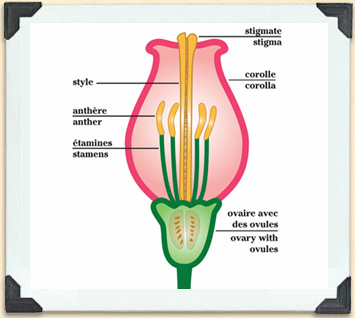Pollination

In her quest for the nectar found inside each flower's base, the bee brushes against the stigma and stamens, transferring pollen from one flower to the next.
© Gary Brown, Bragg Lumber Company
The Importance of Bees: Pollination
The most important thing that bees do is pollinate. Pollination is needed for plants to reproduce, and so many plants depend on bees or other insects as pollinators.
When a bee collects nectar and pollen from the flower of a plant, some pollen from the stamens—the male reproductive organ of the flower—sticks to the hairs of her body. When she visits the next flower, some of this pollen is rubbed off onto the stigma, or tip of the pistil—the female reproductive organ of the flower. When this happens, fertilization is possible, and a fruit, carrying seeds, can develop.




